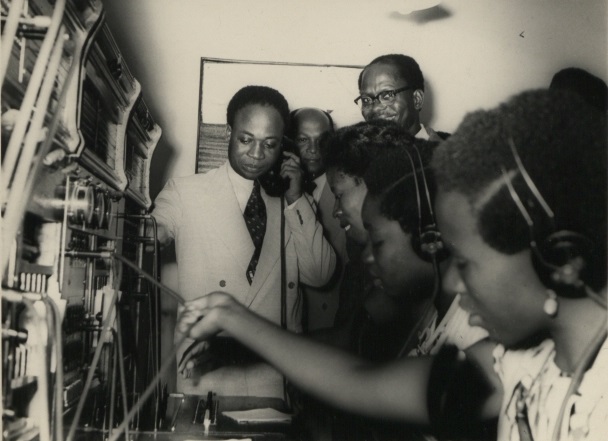
Image: Kwame Nkrumah visits a telephone exchange in Accra, Ghana. CO 1069-439-49, courtesy of Wikimedia Commons
Download PDFs: Ghana, in two parts
Part One: 1941-1952 [254MB]
Part Two: 1952-1957 [230MB]
Volume Details: Series B Volume 1. First published by The Stationary Office in 1992. Electronic version reproduced with permission of the editor under an Open Government Licence.
Editor Details: RICHARD RATHBONE is Emeritus Professor of African History at the School of Oriental and African Studies, University of London. He is the author of multiple volumes on African history, including Murder and Politics in Colonial Ghana (1993), Nkrumah and the Chiefs (2000) and co-editor, with David Anderson, of Africa’s Urban Past (1999).
Selection from Introduction:
“This collection of documents is intended to illuminate some of the processes which led to the end of British colonial rule in the Gold Coast on 6 March 1957. Whilst South Africa and then the Sudan had paved the way to independent status for African dependencies and protectorates, Ghana, as the Gold Coast was to be renamed by its government at independence, was the first tropical African state to achieve full nation-statehood after a colonial period which in the case of the littoral of the Gold Coast had lasted for just over a century.” (Part One, p.xxxi)
